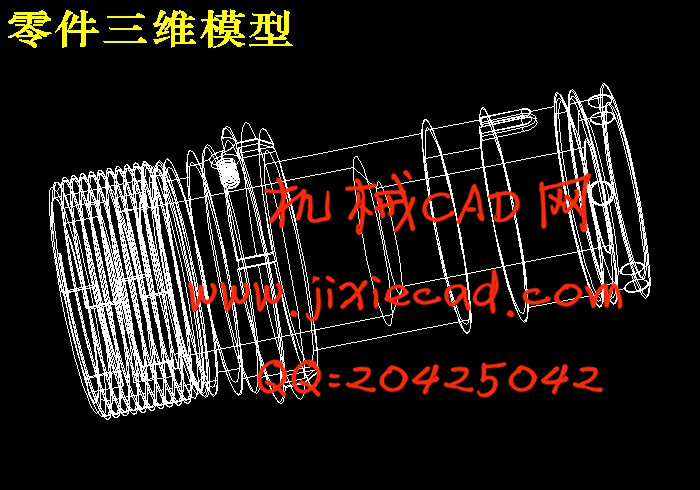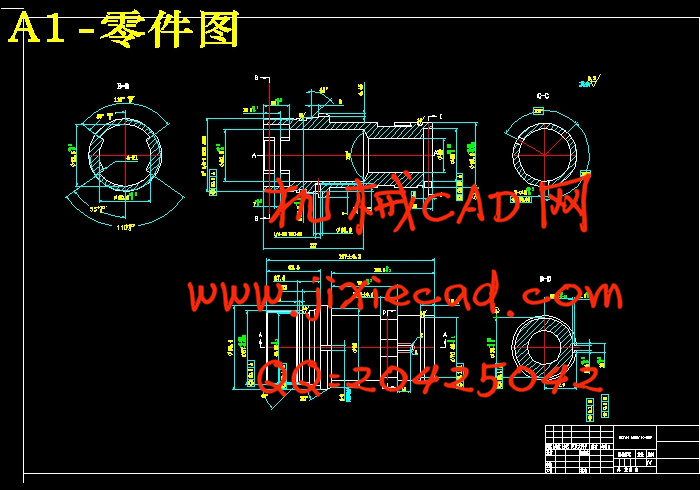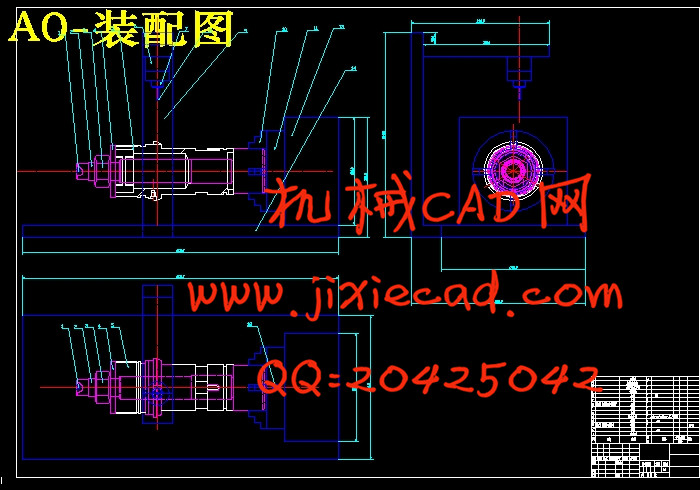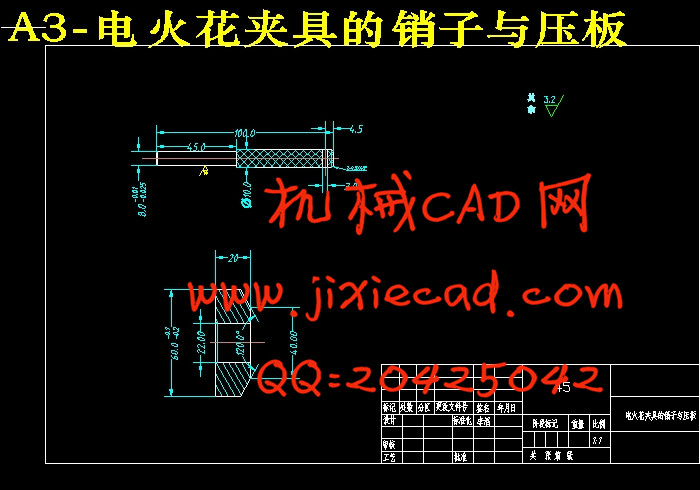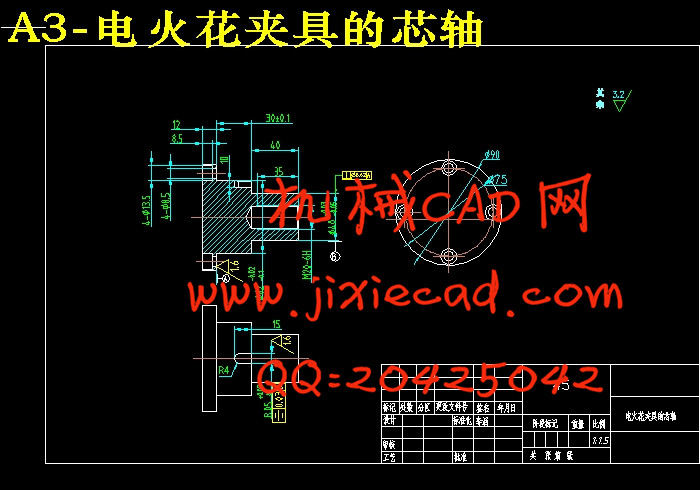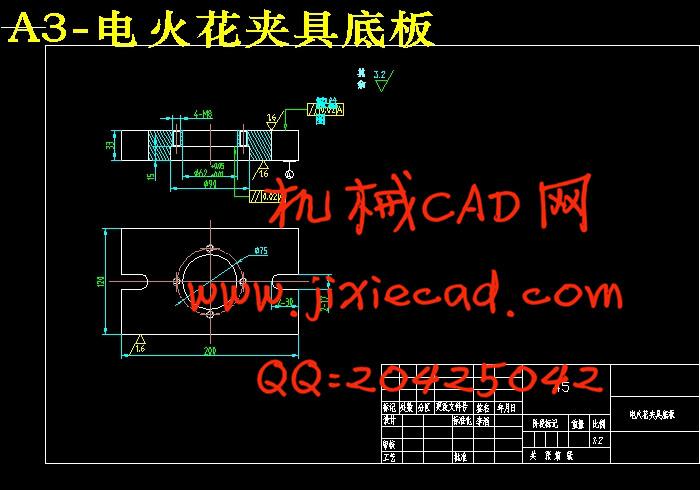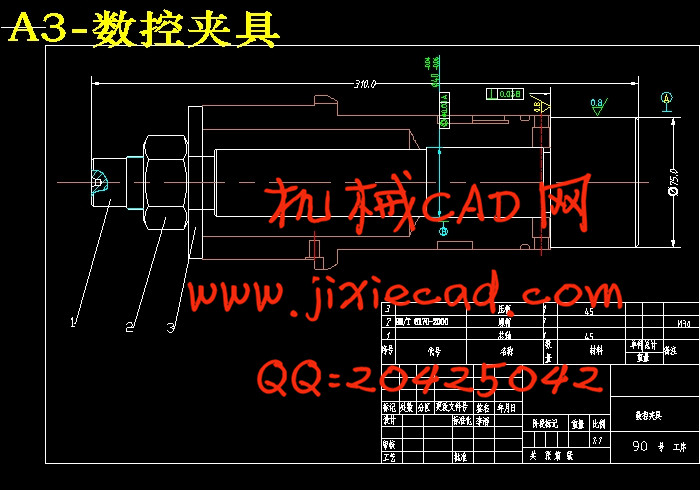设计简介
摘 要
简要回顾国内外机械工艺和夹具发展历程, 讨论国内外机械制造和工艺水平的人差异,展望现在全球机械工艺和夹具的发展 趋势。分析零件“连接支架”的机械加工工艺性和一些重要加工面的加工要求, 对该零件进行工艺规程方面设计和制订,包括基准的选择,工件加工工艺顺序的安排, 工艺尺寸链的计算,加工余量的计算和一些其它加工参数的确定。 针对工艺规程的相关工序设计专用夹具,由夹具的定位方式来确定夹紧元件和定位元件, 对夹具的定位误差来进行分析。介绍同学们在毕业设计中经历的过程和遇到的困难,阐述在“ 连接支架”的机械工艺和相关夹具设计中我们所学到的知识和提升的能力。 重点为对零件“ 连接 支架”工艺规程及其相关的夹具的设计。
关键词:机械加工工艺,夹具,机械制造
ABSTRACT
A brief review of the mechanical process and fixture development both at home and abroad, discussed the domestic and foreign machinery manufacture and process level difference, looking now global development trend of the mechanical process and fixture. Analysis of the parts "bracket" mechanical processing and some important machining surface processing requirements, to design and develop the parts for process planning, including the selection of reference, the arrangement of the workpiece processing order, the calculation of process dimension chain, the calculation of machining allowance and the determination of some other processing parameters. In view of the special fixture related process design procedure, by positioning way to determine the clamping fixture components and positioning components, for the fixture positioning error for analysis. Introduce the students experience in the graduation design process and the difficulty, in the mechanical process of "bracket" and related the knowledge we have learned in the design of fixture and the ability to improve. The key for the parts "bracket" process and related rules of fixture design.
Keywords: mechanical processing, fixture, machinery manufacturing
目 录
摘要 ……………………………………………………………………………1
第1章 绪论……………………………………………………………………3
1.1 简介………………………………………………………………………………… 3
1.2 机械制造和机械加工工艺及夹具的发展………………………………………… 3
第2章 零件图分析……………………………………………………………5
2.1 零件材料分析……………………………………………………………………… 5
2.2 零件工艺性分析…………………………………………………………………… 6
2.2.1 外圆 ………………………………………………………………………… 7
2.2.2 内孔 ………………………………………………………………………… 7
2.2.3 其他重要加工部分 ………………………………………………………… 8
2.2.4 倒角等 ……………………………………………………………………… 9
2.3 零件总体分析……………………………………………………………………… 9
第3章 工艺规程设计…………………………………………………………10
3.1 设计要求……………………………………………………………………………11
3.2 工艺顺序的安排……………………………………………………………………11
3.3 加工计划……………………………………………………………………………13
3.4 主要加工部分余量计算……………………………………………………………14
3.5 基准的选择…………………………………………………………………………17
3.5.1 设计基准…………………………………………………………………… 17
3.5.2 定位基准的选择…………………………………………………………… 17
3.5.2.1 粗基准的选择……………………………………………………… 17
3.5.2.2 精基准的选择……………………………………………………… 17
第4章 夹具设计与分析………………………………………………………19
4.1 现代机床夹具设计的要求…………………………………………………………19
4.2 连接支架工艺中对夹具的要求………………………………………………… 19
4.3 工艺中典型专用夹具设计分析………………………………………………… 20
4.3.1 60号工序磨工夹具……………………………………………………… 20
4.3.1.1 定位要求……………………………………………………………20
4.3.1.2 定位元件的设计……………………………………………………21
4.3.1.3 夹紧元件的设计……………………………………………………21
4.3. 1.4 定位误差分析………………………………………………… …21
4.3 .2 90 号工序数控夹具………………………………………………………22
4.3. 2.1 定位要求………………………………………………………… 22
4.3. 2.2 定位元件的设计……………………………………………………23
4.3. 2.3 夹紧元件的设计………………………………………………… 23
4.3. 2.4 定位误差分析…………………………………………………… 23
4.3 .3 110 /12 0 号工序数控铣工 /电火花夹具…………………………… 23
4.3. 3.1 定位要求……………………………………………………………24
4.3. 3.2 定位元件的设计……………………………………………………24
4.3. 3.3 夹紧元件的设计……………………………………………………25
4.3. 3.4 定位误差分析………………………………………………………25
结论………………………………………………………………………… 26
参考文献………………………………………………………………………28致谢………………………………………………………………………… 29
简要回顾国内外机械工艺和夹具发展历程, 讨论国内外机械制造和工艺水平的人差异,展望现在全球机械工艺和夹具的发展 趋势。分析零件“连接支架”的机械加工工艺性和一些重要加工面的加工要求, 对该零件进行工艺规程方面设计和制订,包括基准的选择,工件加工工艺顺序的安排, 工艺尺寸链的计算,加工余量的计算和一些其它加工参数的确定。 针对工艺规程的相关工序设计专用夹具,由夹具的定位方式来确定夹紧元件和定位元件, 对夹具的定位误差来进行分析。介绍同学们在毕业设计中经历的过程和遇到的困难,阐述在“ 连接支架”的机械工艺和相关夹具设计中我们所学到的知识和提升的能力。 重点为对零件“ 连接 支架”工艺规程及其相关的夹具的设计。
关键词:机械加工工艺,夹具,机械制造
ABSTRACT
A brief review of the mechanical process and fixture development both at home and abroad, discussed the domestic and foreign machinery manufacture and process level difference, looking now global development trend of the mechanical process and fixture. Analysis of the parts "bracket" mechanical processing and some important machining surface processing requirements, to design and develop the parts for process planning, including the selection of reference, the arrangement of the workpiece processing order, the calculation of process dimension chain, the calculation of machining allowance and the determination of some other processing parameters. In view of the special fixture related process design procedure, by positioning way to determine the clamping fixture components and positioning components, for the fixture positioning error for analysis. Introduce the students experience in the graduation design process and the difficulty, in the mechanical process of "bracket" and related the knowledge we have learned in the design of fixture and the ability to improve. The key for the parts "bracket" process and related rules of fixture design.
Keywords: mechanical processing, fixture, machinery manufacturing
目 录
摘要 ……………………………………………………………………………1
第1章 绪论……………………………………………………………………3
1.1 简介………………………………………………………………………………… 3
1.2 机械制造和机械加工工艺及夹具的发展………………………………………… 3
第2章 零件图分析……………………………………………………………5
2.1 零件材料分析……………………………………………………………………… 5
2.2 零件工艺性分析…………………………………………………………………… 6
2.2.1 外圆 ………………………………………………………………………… 7
2.2.2 内孔 ………………………………………………………………………… 7
2.2.3 其他重要加工部分 ………………………………………………………… 8
2.2.4 倒角等 ……………………………………………………………………… 9
2.3 零件总体分析……………………………………………………………………… 9
第3章 工艺规程设计…………………………………………………………10
3.1 设计要求……………………………………………………………………………11
3.2 工艺顺序的安排……………………………………………………………………11
3.3 加工计划……………………………………………………………………………13
3.4 主要加工部分余量计算……………………………………………………………14
3.5 基准的选择…………………………………………………………………………17
3.5.1 设计基准…………………………………………………………………… 17
3.5.2 定位基准的选择…………………………………………………………… 17
3.5.2.1 粗基准的选择……………………………………………………… 17
3.5.2.2 精基准的选择……………………………………………………… 17
第4章 夹具设计与分析………………………………………………………19
4.1 现代机床夹具设计的要求…………………………………………………………19
4.2 连接支架工艺中对夹具的要求………………………………………………… 19
4.3 工艺中典型专用夹具设计分析………………………………………………… 20
4.3.1 60号工序磨工夹具……………………………………………………… 20
4.3.1.1 定位要求……………………………………………………………20
4.3.1.2 定位元件的设计……………………………………………………21
4.3.1.3 夹紧元件的设计……………………………………………………21
4.3. 1.4 定位误差分析………………………………………………… …21
4.3 .2 90 号工序数控夹具………………………………………………………22
4.3. 2.1 定位要求………………………………………………………… 22
4.3. 2.2 定位元件的设计……………………………………………………23
4.3. 2.3 夹紧元件的设计………………………………………………… 23
4.3. 2.4 定位误差分析…………………………………………………… 23
4.3 .3 110 /12 0 号工序数控铣工 /电火花夹具…………………………… 23
4.3. 3.1 定位要求……………………………………………………………24
4.3. 3.2 定位元件的设计……………………………………………………24
4.3. 3.3 夹紧元件的设计……………………………………………………25
4.3. 3.4 定位误差分析………………………………………………………25
结论………………………………………………………………………… 26
参考文献………………………………………………………………………28致谢………………………………………………………………………… 29


